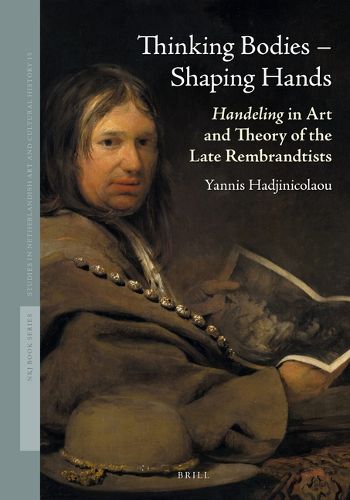Readings Newsletter
Become a Readings Member to make your shopping experience even easier.
Sign in or sign up for free!
You’re not far away from qualifying for FREE standard shipping within Australia
You’ve qualified for FREE standard shipping within Australia
The cart is loading…






Thinking Bodies - Shaping Hands focuses on the critical as well as historical dimension of the handling of the brush and of the resulting appearance of colour on the painted surface in art and art theory from the middle of the 17th (above all from 1660) to the dawn of the 18th century in the Netherlands. More specifically, it deals with Rembrandt’s last pupils such as Arent de Gelder. Handeling describes an active, embodied process that is connected to the motion of the hand with the brush or with any other kind of tool. This term, up to now not sufficiently appreciated in scholarly literature, seems to be fruitful in this context. It is not so much connected with the term style , as with a prior step, which is equivalent to manner . At the same time, its meaning in Dutch till today is action . Handeling is an act that could be described as a form-act . It focuses on Formgestaltung, in which these actions themselves are understood as processes. Examining the Rembrandtist ideology of painting , this study attempts to reveal the embodied process of painting in the sense of a bodily articulation during the application of colour. This occurs within the productive tension between theory and practice.
$9.00 standard shipping within Australia
FREE standard shipping within Australia for orders over $100.00
Express & International shipping calculated at checkout
Thinking Bodies - Shaping Hands focuses on the critical as well as historical dimension of the handling of the brush and of the resulting appearance of colour on the painted surface in art and art theory from the middle of the 17th (above all from 1660) to the dawn of the 18th century in the Netherlands. More specifically, it deals with Rembrandt’s last pupils such as Arent de Gelder. Handeling describes an active, embodied process that is connected to the motion of the hand with the brush or with any other kind of tool. This term, up to now not sufficiently appreciated in scholarly literature, seems to be fruitful in this context. It is not so much connected with the term style , as with a prior step, which is equivalent to manner . At the same time, its meaning in Dutch till today is action . Handeling is an act that could be described as a form-act . It focuses on Formgestaltung, in which these actions themselves are understood as processes. Examining the Rembrandtist ideology of painting , this study attempts to reveal the embodied process of painting in the sense of a bodily articulation during the application of colour. This occurs within the productive tension between theory and practice.